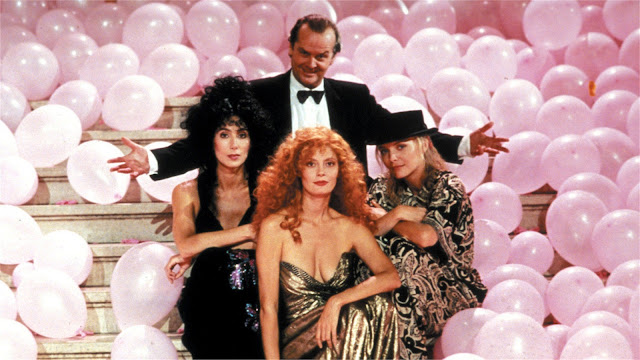It's a story as old as time. A mortal sells his soul to the devil for what he really wants only to suffer the consequences later. Bargaining with evil always comes at a cost.
"I'd give my soul to nail him." - Joseph Foster
Joseph Foster (Thomas Mitchell) is a good man by all accounts. He's devoted to his wife Martha (Geraldine Wall). He runs an athletic club for wayward boys with his good friend Reverend Thomas Garfield (George Macready) and takes on a particular tough case with Larry Price (Darryl Hickman). As district attorney, he seeks to put a criminal in jail but just needs the proof. And this is when his troubles begins. When he proclaims he would sell his soul for evidence needed in the case, a mysterious figure by the name of Nick Beal (Ray Milland) shows up. He's a strange man. He appears and disappears seemingly out of the blue. He's conjures up the much needed evidence and helps Foster run for governor. Then things start to spiral out of control. Foster develops a wandering eye when Beal hires prostitute Donna Allen (Audrey Totter) to play the role of dutiful campaign secretary and temptation to Foster. Then people start to question how Foster was able to get that evidence that had once been destroyed. Foster can't seem to shake the shadowy figure who haunts him day by day. Who exactly is Nick Beal and what does he want from Foster? Can Foster save his marriage, his career, his life?
Directed by John Farrow, Alias Nick Beal (1949) is a terrific Film Noir with a fantastic cast, captivating story, ominous music, beautiful and eerie cinematography. It's everything a film noir should be: dark, brooding and captivating. Based on an original story by Mindret Lord and adapted for the screen by Jonathan Latimer, Alias Nick Beal is a modern story in the tradition of Goethe's Faust. It's a morality tale with a clear warning against "trading principles for personal glory."
 |
| Audrey Totter and Ray Milland in Alias Nick Beal |
If you came to Alias Nick Beal for Ray Milland, you won't be disappointed. A few years after his Academy Award winning performance in The Lost Weekend, Milland wanted to strengthen his acting muscles with different types of characters. Nick Beal presented him with a chance to play a villain, a captivating one at that. Audrey Totter has a fantastic role as Donna who transforms from a lowlife to a career woman. She's a complex character who begins to doubt her newfound role. Totter is always amazing to watch on screen and I love her in this sort of two-part role. One of my favorite actors of all time Darryl Hickman has small but memorable role as a tough kid from the streets who becomes the recipient of Foster's benevolence. Cast members looked back on this film kindly. John Farrow and Audrey Totter both proclaimed it as one of their best films. Farrow could be tough on actors but he seemed to get on swimmingly with Milland.
Watching Alias Nick Beal, I couldn't help but feel like it came from a parallel universe. Another old Hollywood where many movies like this existed and this one just happened to sneak through to the other side. Perhaps it's the fact that this film is so highly sought-after and hard to get that makes it that way. This movie aired recently on TCM as part of their Summer Under the Stars tribute to Ray Milland. It was the first time they had ever screened the moment making it one not to miss. This film, along with many others, are part of the Paramount library owned and tightly controlled by MCA. If you find yourself with an opportunity to watch Alias Nick Beal, do so. Who knows when you'll get another chance.
Update: According to this article in The Hollywood Reporter, the last film Hugh Hefner screened at the Playboy Mansion, nine days before he passed away, was Alias Nick Beal. Did he tape it off of TCM?!


















